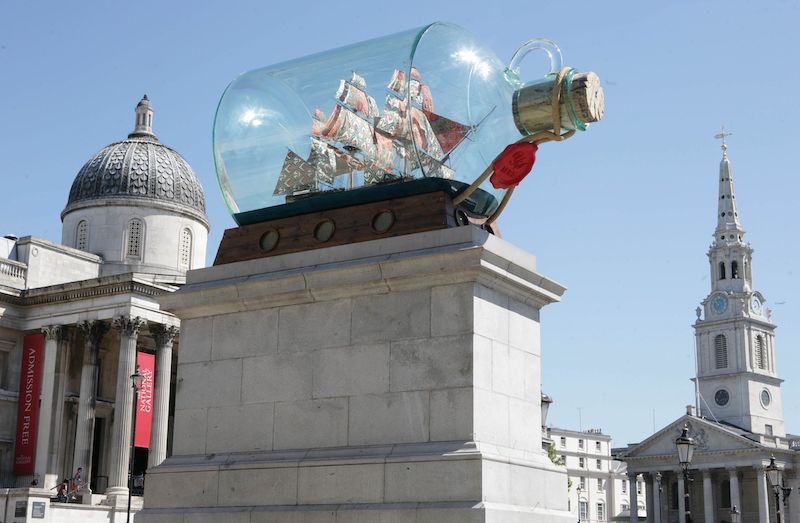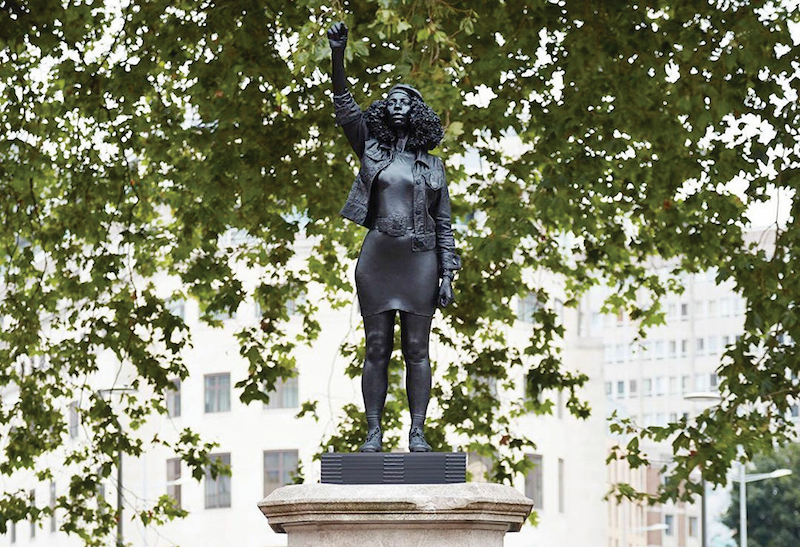
The unveiling of the statue of Diana, flanked by her sons Prince William and Harry (Photo: Reuters)
Besides the elation and subsequent heartbreak over England’s performance at Euro 2020, and the obsession over summer holiday plans as the countdown to Freedom Day from long-running Covid-19 restrictions ended, much of the headlines in the UK this year have been dominated by Britain’s royal family.
The most recent event would be the unveiling of the statue of Diana, Princess of Wales at Kensington Gardens on July 1. In many ways, it was a positive occasion, bringing together her two sons after a much-publicised rift. The last year saw the younger prince stepping away from active royal duties and moving to the US.
In an act of filial devotion, Princes William and Harry jointly commissioned the statue to commemorate what would have been the 60th birthday of their mother, with the latter flying home for the unveiling.
But the anticipation and celebration of the brothers’ reunion was soon overshadowed by criticism of the slightly larger than life-sized bronze sculpture.
“Kitsch and archaic … a people-pleasing dud”, The Telegraph’s chief art critic Alastair Sooke declared, adding that the theme of Diana surrounded by three children had a slight Soviet tone. Acerbic broadcaster and journalist Piers Morgan simply called it “not a great statue” on Twitter. A barrage of comments followed on social media. Some called it stiff and lifeless; others said it was outright ugly.
When asked, Malaysian artist Ahmad Fuad Osman had to agree with the critics. “The main idea here is about Princess Diana’s patronages and her charity work, especially with children. But focusing on the visual form alone, the main attraction, the sculpture is a bad one, I must say.
“It doesn’t do justice to her. Just like a portrait painting, a figurative sculpture, especially someone’s statue or memorial, should be able to express the core characteristic of the intended figure or model physically, emotionally and spiritually. It is not easy, but that’s the role of the artist, to help the audience and public ‘feel the sculpture’.
“In this case, I think the sculptor Ian Rank-Broadley failed to achieve that. The way he presented such an icon came out emotionally and spiritually dead,” he comments.
To be fair, most have noted that it was an almost impossible task for Rank-Broadley to begin with. Besides his subject being one of the world’s most iconic, fashionable and photographed women, he was also dealing with very involved and probably exacting clients.
Yes, in a post-modern contemporary world, the safe and old-fashioned interpretation feels out of step. But are we asking for too much? In another piece for The Telegraph, Simon Heffer went as far as to bemoan the downfall of sculpture art and British public art.
Conversation around the statue has also spilled over into the wider picture. Is memorialising a historical figure in large, literal form today still relevant? Especially at a time when socio-political movements are resulting in more statues being toppled than they are erected, including that of Queen Elizabeth II and Queen Victoria in Canada recently.
To examine that, we have to look at the role of public art.
“Public art is a distinguishing part of history and our evolving culture. It reflects and reveals society,” says Fuad. Apart from regenerating and transforming a space, public art is also about accessibility and potentially inviting deeper contemplation, he adds.
Shalini Ganendra, cultural adviser and founder of Shalini Ganendra Advisory, suggests that the contemplation or engagement should be one that transcends time. “From its unveiling and continuing on in the contemporary, the success of any public art project should be measured by its visual dynamic and sustainable engagement.”
This would, at the very least, include informing us about the subject, creator and period of installation, she adds. “And importantly, prompt us to remember and challenge or question history and the present. As such, public art is a critical instigator for thinking, taking on an independent life beyond the intentions of its creator and commissioner.”
Beverly Yong, art researcher and co-author of Narratives in Malaysian Art, concurs. On the Diana sculpture, she says, “it has fulfilled at least one of the main roles of public art, which is to engage the public in debate and conversation. I feel the sculpture and response to it pose more interesting questions about the relationship between the royal family, the public and the public space than about public art.”
Yong argues that at the end of the day, it is not fair to propose that the sculpture represents British art. Rather, her opinion is that it is a “family commission made by the regular family artist”. She draws a comparison between this and the Fourth Plint at Trafalgar Square, a platform that features new public artworks commissioned every year.
the_fourth_plinth.jpeg

“These would make a much stronger claim as representative of British public sculpture, and are always discursive, conceptual and only occasionally aesthetically pleasing. It’s a clever idea because it situates contemporary art as dynamic, provocative and changing in the midst of an iconic historical monument,” she observes.
Yong also explores the more pertinent question, “Should we be building bronze memorials in this day and age?” The answer, she suggests, is not whether to do so, but how. “If we do, we should try to be more imaginative about it.
Yet, should the old be torn down to make way for the new? It depends on who you ask. The current “woke culture” wars have resulted in past and present colliding, as anti-colonialism sentiment and the Black Lives Matter movement, among others, have seen more than a few historical figures toppled.
Shalini says artworks should not be sacrificed. “Take the Rhodes statue in Oxford, for example. My view is that it should stay. Aren’t most heroes possibly villains in other contexts? So, keep alive important histories and issues, discuss the good works and bad deeds so we can all be informed to better develop collective responsibility. Responsible debate keeps us growing and so should successful public art.”
As an artist who has done his fair share of work on political issues, Fuad is more interested in how things are developing. “Last year, we saw the monument of Edward Colston, a 17th-century British slave trader, torn down and dunked in Bristol harbour during a Black Lives Matter protest. Soon after, Marc Quinn, a contemporary British artist, saw an opportunity and quickly seized it, erecting the figure of a black female protester and activist on Colston’s empty plinth. Here, we could evidently see how artists can play a socio-political role and how a memorial statue became a powerful tool for a political cause.”
black_lives_matter.jpg

As the conversation turns towards home soil, there is a bleak realisation that even the worst criticism of the Diana statue would be better than having a lack of memorable public artwork, other than the stately Tugu Negara.
Incidentally, this month marks the anniversary of the demolition of Syed Ahmad Jamal’s Puncak Purnama, cavalierly destroyed in 2016 by local authorities as part of an urban renewal programme.
It might have been avoided if the local authorities had considered the role of public art, as articulated by Yong. “With any art that takes up public space, we should make sure that the communities that are its immediate stakeholders have a say in what goes there.”
Shalini says the better option would have been to put the installation up for private purchase, making money and saving the piece at the same time.
But let’s face it, the lack of public art by professional artists today is directly related to a lack of basic infrastructure. “It takes willingness on the part of municipal councils, public site developers and architects to engage with artists and the public on what can be produced in terms of meaningful public art,” Yong says.
Fuad offers another perspective that also paints the reality we’re in: “You need to put the right people in the right place to make it happen.”
This article first appeared on Jul 19, 2021 in The Edge Malaysia.


